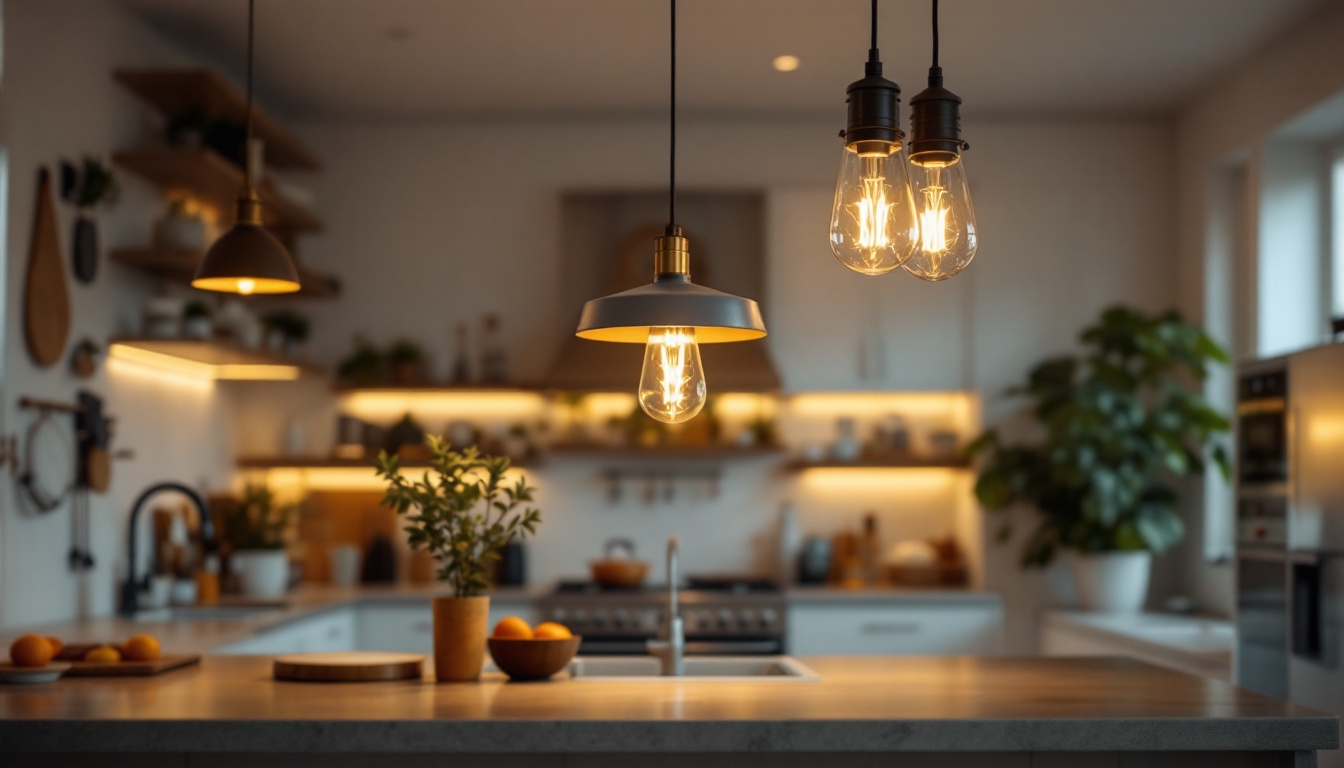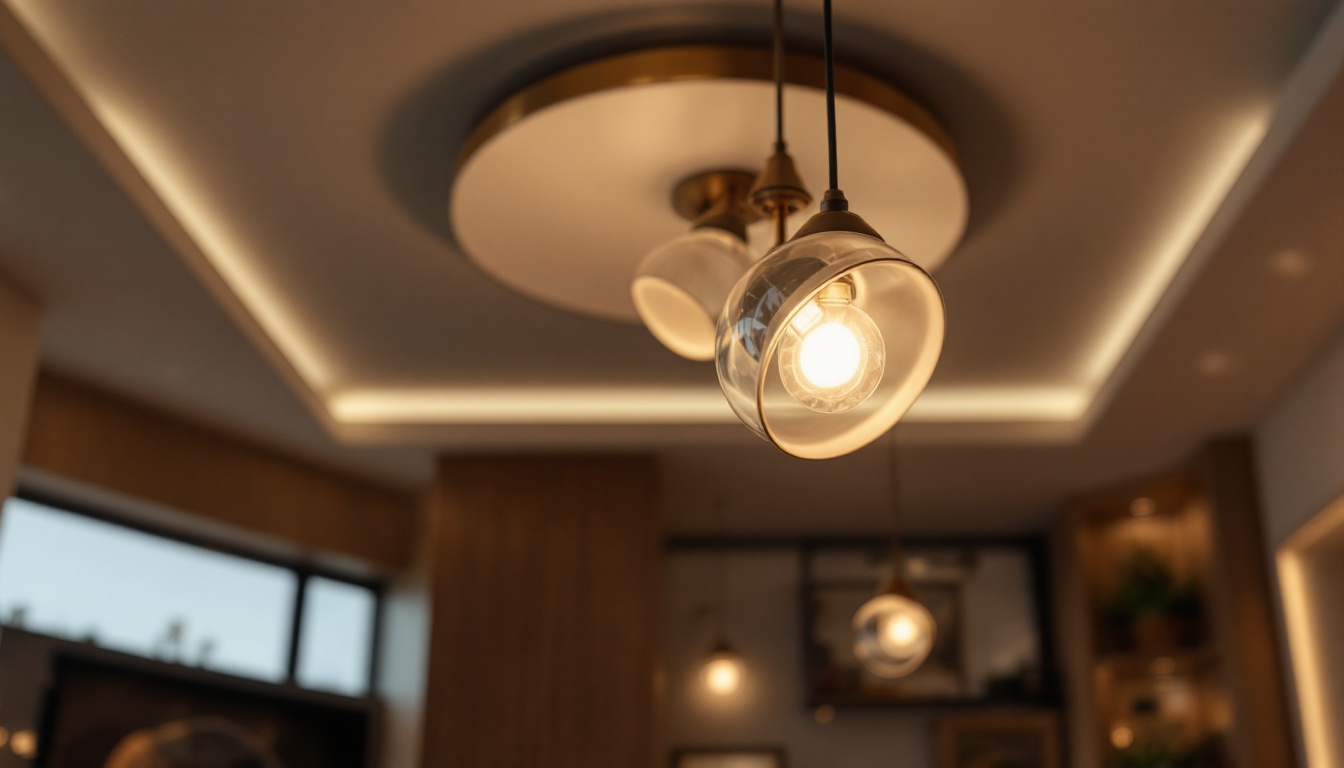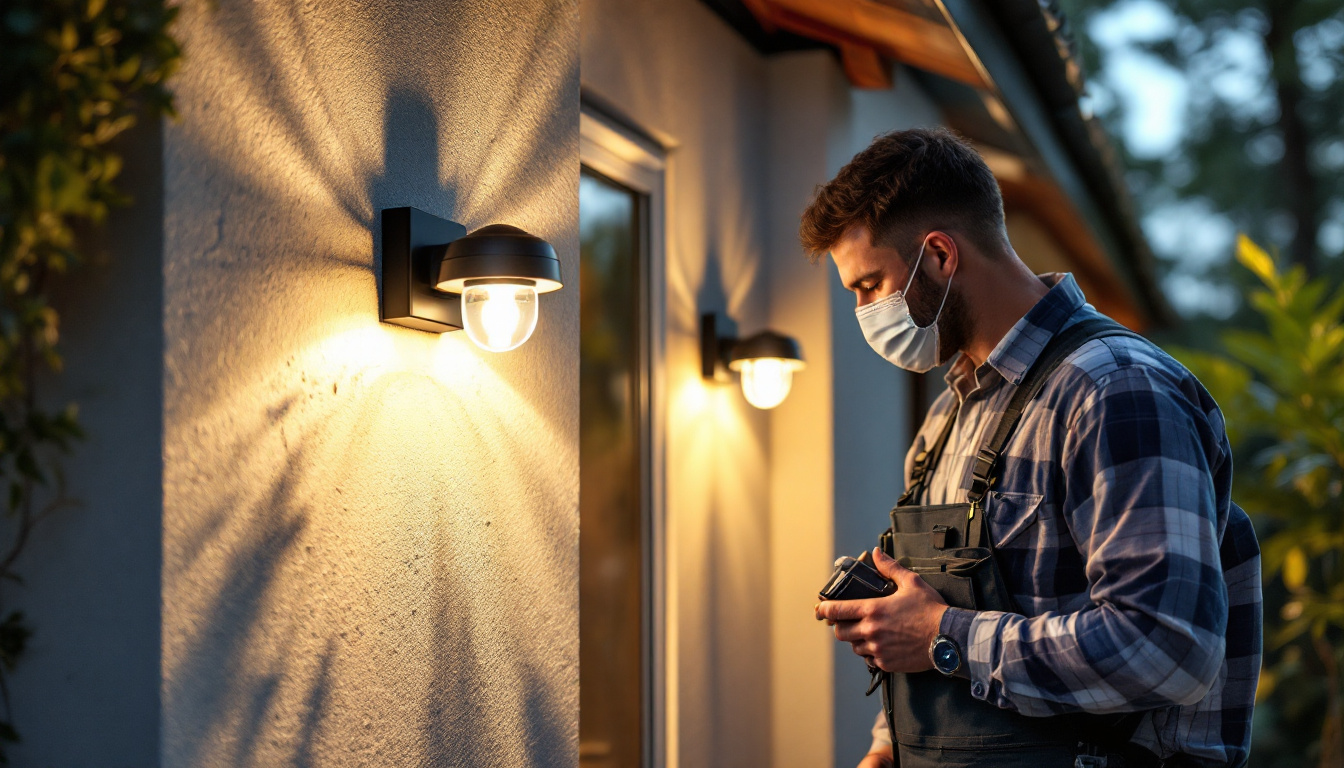

In the realm of interior design and home improvement, lighting plays a pivotal role in shaping the ambiance and functionality of a space. Among the various types of lighting fixtures, ceiling kitchen lights stand out as essential components for any successful lighting project. They not only illuminate the kitchen but also enhance its aesthetic appeal, making them a must-have for lighting contractors and homeowners alike.
Kitchen lighting is crucial for several reasons. It affects the overall mood of the space, influences the functionality of kitchen tasks, and contributes to the safety of the environment. A well-lit kitchen allows for better visibility, making cooking and food preparation more efficient. In addition, the right lighting can transform the kitchen into a welcoming area for family and friends.
When designing a kitchen, functionality should always be a priority. Ceiling lights provide essential illumination that helps homeowners navigate their kitchen with ease. Whether chopping vegetables or reading a recipe, adequate lighting is necessary to prevent accidents and ensure precision in cooking.
Moreover, combining ceiling lights with task lighting, such as under-cabinet fixtures, can create a layered lighting effect that enhances both functionality and aesthetics. This approach allows for a versatile workspace that caters to various activities, from meal prep to entertaining guests. For instance, adjustable track lighting can be strategically positioned to highlight specific work areas, ensuring that every corner of the kitchen is well-lit. This flexibility not only improves the cooking experience but also allows for easy adjustments based on the time of day or the type of activity being performed.
Beyond functionality, ceiling kitchen lights can significantly enhance the aesthetic appeal of the space. With a wide variety of styles, sizes, and finishes available, lighting contractors can choose fixtures that complement the overall design theme of the kitchen. Whether it’s a sleek modern pendant or a classic chandelier, the right ceiling light can serve as a focal point that ties the entire room together.
Additionally, the color temperature of the light can influence the kitchen’s ambiance. Warmer tones can create a cozy atmosphere, while cooler tones can lend a more contemporary feel. Selecting the appropriate color temperature helps in achieving the desired mood for the kitchen. Furthermore, dimmable lighting options allow homeowners to adjust the brightness according to the occasion, whether it’s a lively dinner party or a quiet family breakfast. Incorporating decorative elements like vintage bulbs or artistic light fixtures can also add character and personal flair, making the kitchen not just a functional space but a reflection of the homeowner’s style and personality.
When it comes to ceiling kitchen lights, there are several types to consider. Each type offers unique benefits and can be used in various configurations to achieve the desired lighting effect.
flush mount lights are a popular choice for kitchens due to their sleek design and versatility. These fixtures sit close to the ceiling, making them ideal for spaces with lower ceilings. They provide widespread illumination and can be found in various styles, from minimalist designs to ornate fixtures.
Flush mount lights are particularly effective in smaller kitchens where space is at a premium. They can brighten the area without overwhelming the design, ensuring that the kitchen remains open and inviting.
pendant lights are another excellent option for kitchen lighting. These fixtures hang from the ceiling and can be used to create visual interest above kitchen islands or dining areas. They come in various shapes and sizes, allowing for creative arrangements that can enhance the kitchen’s overall design.
In addition to their aesthetic appeal, pendant lights can also provide focused illumination for specific tasks. For instance, a cluster of pendant lights above a kitchen island can create a well-lit workspace that is both functional and stylish.
For those looking to make a statement, chandeliers can add a touch of elegance to any kitchen. While traditionally associated with dining rooms, modern chandeliers are increasingly being used in kitchens to create a dramatic focal point. They can elevate the overall design and serve as a conversation starter during gatherings.
When selecting a chandelier for the kitchen, it’s essential to consider the scale of the space. A large chandelier may overwhelm a small kitchen, while a smaller fixture might get lost in a more expansive area. Finding the right balance is key to achieving a harmonious design.
Selecting the right ceiling kitchen lights involves careful consideration of several factors. Lighting contractors must take into account the kitchen’s layout, design, and the specific needs of the homeowners.
The size of the kitchen plays a significant role in determining the appropriate lighting fixtures. Larger kitchens may benefit from multiple light sources, while smaller spaces may require more streamlined options. It’s crucial to assess the scale of the room and choose fixtures that complement the overall proportions.
In addition, the height of the ceiling should be considered. For instance, pendant lights should be hung at a height that allows for comfortable movement beneath them, while flush mount lights should be selected to avoid overwhelming the space.
Every kitchen has its unique style, and the lighting fixtures should reflect that aesthetic. Whether the kitchen is modern, traditional, or eclectic, the ceiling lights should harmonize with the overall design theme. Lighting contractors should consider the materials, finishes, and colors of the fixtures to ensure they complement the cabinetry, countertops, and other design elements.
Furthermore, mixing and matching different styles can create a dynamic look. For example, combining industrial pendant lights with sleek flush mount fixtures can add depth and character to the kitchen.
In today’s environmentally conscious world, energy efficiency is a crucial consideration in lighting design. LED ceiling lights are an excellent choice for kitchens, as they consume significantly less energy compared to traditional incandescent bulbs. They also have a longer lifespan, reducing the need for frequent replacements.
Incorporating energy-efficient lighting not only benefits the environment but can also lead to cost savings on energy bills. Lighting contractors should educate homeowners about the advantages of LED lighting and help them make informed choices that align with their sustainability goals.
Proper installation of ceiling kitchen lights is essential for both safety and functionality. Lighting contractors should adhere to best practices to ensure that the fixtures are securely mounted and provide optimal illumination.
Before installing ceiling lights, it’s vital to assess the existing electrical infrastructure. This includes checking the wiring, ensuring that the circuit can handle the load of the new fixtures, and confirming that all connections are secure. If there are any doubts about the electrical setup, consulting a licensed electrician is advisable.
Additionally, using the correct type of light bulbs is crucial. Contractors should ensure that the bulbs used are compatible with the fixtures and meet the desired brightness and color temperature specifications.
The placement of ceiling lights can significantly impact the overall lighting effect in the kitchen. A common guideline is to space fixtures evenly to avoid dark spots and ensure uniform illumination. For larger kitchens, multiple fixtures may be necessary to achieve the desired brightness.
When installing pendant lights, a general rule of thumb is to hang them 30 to 36 inches above the countertop or island. This height allows for adequate lighting while ensuring that the fixtures do not obstruct views or movement.
Incorporating dimmer switches into the lighting design can enhance the versatility of ceiling kitchen lights. Dimmers allow homeowners to adjust the brightness according to their needs, whether they are preparing a meal or hosting a dinner party. This flexibility can significantly improve the kitchen’s functionality and ambiance.
When installing dimmer switches, it’s essential to choose ones that are compatible with the type of bulbs being used. Not all dimmers work with LED bulbs, so selecting the right product is crucial for optimal performance.
Regular maintenance of ceiling kitchen lights is necessary to ensure their longevity and performance. Lighting contractors should advise homeowners on how to care for their fixtures to keep them looking and functioning their best.
Dust and grease can accumulate on light fixtures over time, diminishing their brightness and aesthetic appeal. Regular cleaning is essential to maintain optimal performance. Homeowners should be encouraged to dust their ceiling lights regularly and clean them with appropriate cleaning solutions to avoid damage.
For fixtures with intricate designs, such as chandeliers, extra care may be required during cleaning. Using a soft cloth and gentle cleaning agents can help preserve the finish and prevent scratches.
As bulbs reach the end of their lifespan, they will need to be replaced to maintain consistent lighting levels. Homeowners should be informed about the signs of a failing bulb, such as flickering or dimming, and encouraged to replace them promptly.
When replacing bulbs, it’s essential to choose the correct wattage and type to ensure compatibility with the fixtures. Lighting contractors can provide guidance on the best options available based on the specific fixtures used in the kitchen.
Ceiling kitchen lights are an indispensable element of successful lighting projects. They provide essential illumination, enhance the kitchen’s aesthetic appeal, and contribute to a functional workspace. By understanding the various types of ceiling lights, considering key factors during selection, and following best practices for installation and maintenance, lighting contractors can create beautiful and efficient kitchen environments.
As the heart of the home, the kitchen deserves thoughtful lighting design that caters to both practical needs and aesthetic desires. Investing in quality ceiling kitchen lights is a step toward achieving a well-lit, inviting space that enhances the overall experience of cooking and entertaining.
Ready to elevate your lighting projects with the perfect ceiling kitchen lights? Look no further than LumenWholesale, where we offer an exceptional range of high-quality, spec-grade lighting solutions at unbeatable wholesale prices. Say goodbye to middleman markups and hello to premium lighting that meets the highest industry standards. With our hassle-free bulk buying and free shipping, you can ensure your kitchen spaces shine with reliability and style. Don’t compromise on quality or value—discover the best in wholesale lighting and make your next project a dazzling success with LumenWholesale.

Discover essential insights and expert tips for lighting contractors on ceiling lighting solutions.

Explore the latest insights on Koda Solar LED lights with our comprehensive reviews tailored for lighting contractors.

Illuminate your workspace with precision! Discover essential tips and insights on selecting the perfect work lighting to boost productivity and enhance focus.

Discover how LED ceiling can lights are revolutionizing the lighting industry and offering new opportunities for contractors.
Get notified when NEW deals are released.
Optimize your budget with wholesale discounts.
Only top-quality, specification-grade lighting products.
No additional costs at checkout - what you see is what you pay.
We understand the unique needs of contractors.